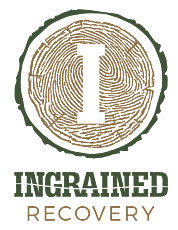Making an Alcohol Taper Schedule and When to Seek Out Detox
It’s hard to understand how difficult it is to stop alcohol consumption until you actually attempt to do it for the first time. If you are hoping to learn how to taper off alcohol safely but aren’t sure where to start, we’d like to provide you with a valuable resource on this page to get the process started.
As anyone who has attempted an alcohol detox will attest, there are strong withdrawal symptoms and other challenges that will be encountered. With that said, it’s certainly worth going through those challenges to overcome your dependence on alcohol and set the stage for a brighter, sober future.
Learn more below and get in touch with Ingrained Recovery at any time for support from a professional, experienced team.
Get Effective Treatment Programs at Ingrained Recovery

Understanding Alcohol Dependence and Withdrawal
Socially, alcohol consumption is not viewed as a big deal. Despite the casual way most people approach alcohol intake, consuming this substance can have some serious consequences. Specifically, ongoing, regular alcohol consumption and, in particular, alcohol abuse, can lead to physical dependence. That means your body will start to rely on alcohol and you will experience alcohol withdrawal symptoms when you go very long without it.
For a regular drinker, withdrawal symptoms can start as quickly as just a few hours after the last drink. These symptoms will be particularly powerful if alcohol intake is cut to zero after being regular and significant. In other words, if you drink heavily currently, and then suddenly quit drinking, the alcohol withdrawal symptoms you experience will be strong and difficult to manage.
Common Alcohol Withdrawal Symptoms
Many different symptoms will present quickly after you quit alcohol cold turkey. For most people, these will include things like anxiety and restlessness, sweating and rapid heart rate, nausea and vomiting, headaches, and more. The exact set of symptoms you experience will be unique to your situation, but you can expect to encounter at least some of those uncomfortable conditions.
It’s also important to note that your alcohol withdrawal symptoms actually have the potential to become life-threatening. This is a particularly notable risk for those who are heavy drinkers. As withdrawal symptoms escalate, they can lead to the potential for seizures or hallucinations. Also, delirium tremens – a condition that causes high blood pressure and confusion – may also result. We’ll talk more later on this page about how to taper off alcohol safely to avoid putting your health at risk.
Get Proven Detox and Rehab Options at Ingrained

A General Alcohol Tapering Schedule
There is a general schedule that you can keep in mind when trying to manage alcohol withdrawal as you stop your consumption of this substance. While the schedule below will give you a starting point as a general framework, it’s important to remember that everyone is different and no two alcohol taper experiences are the same.
Also, there are dangers associated with trying to stop alcohol intake on your own. As you think about tapering off alcohol, strongly consider working with medical professionals at our medical detox to make sure you are kept safe throughout the process.
Step One: Assess the Situation
You can’t get where you want to go unless you know where you are starting. Before you stop drinking entirely, or even start to cut back on alcohol intake, you need to take an assessment of the situation and understand what your alcohol use disorder looks like currently.
So, calculate your current alcohol intake as a daily average. For example, if you are a beer drinker, you might add up the number of beers you’ve consumed in the last week and divide by seven. That number will show you exactly how much you are drinking currently, and will give you a starting point to move forward.
Stopping the use of alcohol cold turkey might not be impossible, but it certainly isn’t easy – and can be dangerous. Tapering off alcohol is often the better approach, and now that you know how much alcohol you are drinking each day, you can establish a tapering schedule that works for your situation.
Step Two: Start to Reduce Consumption
With an understanding of the severity of your alcohol use disorder, you will now be positioned to start to reduce your consumption. As a general rule of thumb, you may want to aim for a roughly 10% reduction every few days. The math won’t be exact, but that’s okay. As long as you establish a mild, but consistent, tapering schedule, you’ll be on the right track.
For someone who consumes 10 beers per day, on average, cutting that to 9 is a logical first step. That might not seem like a big difference at first. It will accumulate, however, and sometime soon you’ll be prepared to quit drinking entirely. After a few days have passed of drinking 9 beers instead of 10, you can drop it to 8 and continue the progression. Tapering off alcohol is one of those things where slow and steady tends to win the race.
Step Three: Support Your Health
Even if you take the moderate approach to tapering alcohol, you’ll still face some withdrawal symptoms along the way. Doing other things to support your health during this time is valuable. For example, you should eat a healthy diet and drink plenty of water to keep yourself hydrated. These smart choices aren’t going to eliminate the withdrawal symptoms associated with an alcohol taper, but they will be a big help.
Staying physically active is also valuable. As you are tapering off alcohol, make it a point to go for a daily walk or two. Or, you might take a bike ride, sign up for a yoga class, or do something else physical that you enjoy. Not only can this activity help with withdrawal symptoms, but it can also help to set the stage for further recovery after you have quit drinking.
Step Four: Monitor Symptoms and Adjust
Despite your best efforts, things might not go as smoothly as you’d like. Alcohol withdrawal is a powerful thing, after all. So, be ready and willing to adjust your alcohol taper at any point to give yourself the best chance of success.
If you aren’t having severe alcohol withdrawal symptoms, you might be able to progress your alcohol taper a little faster than you first thought. To continue the example from above, maybe you go right from 10 to 8 beers, see how it goes for a few days, and then proceed. Or, if the withdrawal symptoms are simply too much, you could dial back your alcohol taper without losing sight of the main goal to quit drinking in the end.
And remember, the caring team at Ingrained is always here to offer medical supervision and support to help you overcome alcohol addiction.
The Dangers of an At-Home Alcohol Detox

At this point, you might be thinking that a strategic alcohol taper sounds like something you could handle at home. We aren’t here to tell you that it’s impossible, but we do want to highlight the risks and challenges so you can make an informed decision.
The reality is that alcohol withdrawal can lead to some very serious health conditions. If your alcohol withdrawal becomes too powerful, you might face symptoms that are not only uncomfortable but cross the line and become life-threatening. Uncontrolled withdrawal symptoms like seizures and delirium tremens, or even something as simple as dehydration, can put you in a dangerous position.
Uncontrolled withdrawal symptoms can also make it more likely that you’ll relapse. Remember, the goal of tapering alcohol is not just to quit drinking temporarily, but to have this change stick for the long run. If that’s going to happen, you need to manage the withdrawal symptoms in a way that makes it less likely that you’ll relapse and find yourself back where you were in the beginning.
A Professional Detox is a Safer Experience
Tapering alcohol under the watchful eye of a professional team is the best way to get through this process. A medical alcohol taper, or detox, is far safer and more likely to be successful in the end. With a medical professional on your side around the clock, any concerning signs will be promptly addressed to keep you safe and on track to get through your alcohol withdrawal symptoms successfully.
It may be the case that medication-assisted treatment, or MAT, is needed to manage your alcohol withdrawal. You wouldn’t have that option at home on your own, but a medical professional can prescribe and administer medications when appropriate. You will also get nutritional and emotional support until you are down to just mild alcohol withdrawal symptoms and you can move to the next steps in your recovery.
Up To 100% of Rehab Costs Covered By Insurance
Ingrained Recovery is Here to Serve You
Without a doubt, the best way to go through alcohol detox is by getting help from a licensed and certified team like that at Ingrained Recovery. This will still be a challenging process, but you won’t be alone in the journey and the medical professionals managing your detox will keep you safe at each step along the way.
To take the first big step toward leaving alcohol use disorder in the past, give our admissions team a call today to discuss the services we provide. You’ll be met by a friendly voice who is sympathetic to your situation and wants to help you get the right type of care to start your recovery immediately. Our whole team looks forward to your call.
